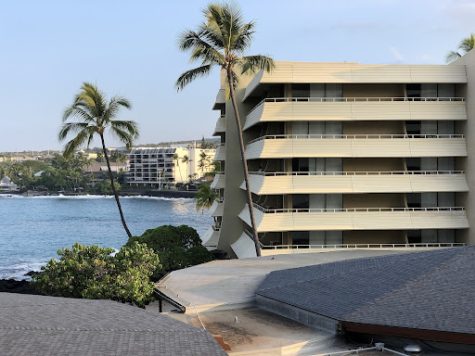Population Paradise or Pollution?
May 2, 2023
Sitting by the pool, watching the sunset on the beach, taking a tour of the volcanoes; when you think of all of these amazing activities I bet you think of Hawaii. The island is known to be one of the best places in the United States to visit while providing some of the best hospitality in the world. Perhaps you have even been to the Disney Resort named Aulani which brings both the magic of movies like Moana and the mosaic of Hawaiian culture to those visiting the state.
I am also willing to bet that when you think of what is known as “sunshine island,” you aren’t picturing thousands of homeless people fighting to pay for their water. Unfortunately, the latter is a reality faced on a daily basis by many Native Hawaiians who have lost the edge against the big tourism and hospitality companies. There are many ways to help this group regain their sense of power on the island from instituting green caps, to updating old legislation. However, the knowledge of how to start reconciliation begins with the facts on where this problem occurs today.
The beginning of issues for Native Hawaiians began from the moment the U.S. annexed the state. The government was flipped upside down and virtually sent into a panic when its agricultural roots were being changed by outsiders. Native Hawaiians (due to their location) had always been heavily reliant on an agricultural way of life. With new economic industries being implemented by Americans, it did not leave much time for adjustment. This concept is nothing new for the state which has historically had its land toyed with by other industries hoping to exploit its natural resources.
The first attempt from the U.S. government to rectify their behavior was in 1921 when the Hawaiian Homes Commission Act was signed by President Harding. This act sought to help Native Hawaiians by returning the land that was rightfully theirs if they could provide evidence of a 50% or more blood quantum. This act showed a lot of promise within the stages of drafting, however after the law was signed, the follow-through quickly lacked intensity.
The Hawaiian state government did not do a consistent job of providing land to those who did qualify under the requirements and a long waiting list developed over the lack of available land. There was very little the government reinstated up until now as industries like tourism continued to expand throughout Hawaii. Additionally, with the number of Americans living in Hawaii increasing after statehood, there are very few people who are able to claim 50% Native Hawaiian in their blood quantum. As more mixed-race percentages become dominant, ancestors of Native Hawaiians face increasing difficulty in having their land returned.
There is also another emerging aspect of the tourism industry that has made the job of the Commission Act much more difficult. This was the development of VRUs, otherwise known as vacation rental units. These establishments are the locations you would commonly find on websites like VRBO and Airbnb. These locations are privately owned and allow people of high economic status to obtain land cheaply on the island in order to turn over a profit. This becomes a problem for the government as they first have to obtain this land from private owners (requiring compensation to be paid to the landowner under the takings clause of the 5th Amendment) before returning it to Natives.
This complicates the amount of funding needed to run the Commissions Act and other grassroots organizations properly. This also raises the question of how to deter more VRUs from emerging throughout the island. Deterring VRUs is a direct setback to the tourism industry which brings in many millions of dollars to the state each year in taxes, making up about 30% of the state’s entire economy. Without the land development industry’s continued expansion, the government will have to come up with a compromise to keep the economic state of Hawaii afloat whilst making transitions to more ethical forms of tourism.
This is where the work begins now. Balancing the new challenges with the old ones and everything in between. So where can you get started? Based on my preliminary research I believe that the best thing we can do is to support organizations who strive to aid the homeless in Hawaii. We can also fight for beneficial amendments to the Hawaiian Homes Commission Act. You can do this through signing petitions (I’m posting one with this article), giving donations, and working with grassroots organizations (my favorite is Conscious Concepts).
If you’re still on the edge about getting involved, a simple thing you can do is just pick a different vacation destination. Since the island is so heavily populated by visitors each year, the simple act of slowing down the rate of outsiders and giving the island time to recuperate is a step in the right direction. How you choose to participate in making a change is less important; just start small or in other words ho’omaka liilii.
Link to Conscious Concepts: https://www.consciousconcepts808.com/



